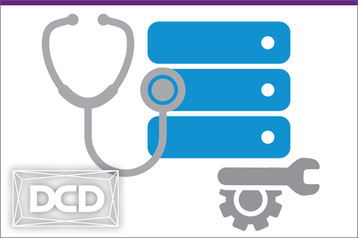Today, enterprises are increasingly transitioning to cloud computing, and to support this change data centers are rapidly being re-architected with next-generation, optimized solutions, including software-defined infrastructure (SDI). With the introduction of new technologies, the truth hiding in plain sight is that data centers have grown more complex, and older legacy technologies and outdated processes are no longer adequate to meet the unique requirements of an agile data center. That’s why progressive-minded data center managers are deploying virtualization management tools, software-defined networks and storage, as well as converged infrastructures within their organization’s data center environment.
In the modern data center, it is now possible to define application and operational policies, while orchestration software automates infrastructure provisioning and configuring to meet unique business requirements.
Self-aware and self-healing
Simply put, SDI-based data centers are smarter, possessing the abilities to be self-aware, self-optimizing, self-scaling and even self-healing. This intelligence and automation means that deployment times go from weeks to virtually minutes. Additionally, capital expenses plummet while operational efficiency climbs dramatically. This transformed infrastructure can then power the innovative services that drive new revenue opportunities.
While many enterprises are only a few steps into their SDI journey, and few have implemented the architecture comprehensively across all data center infrastructure subcategories and functions — including compute, networking, storage — for the majority of enterprises considering a move to SDI, compute virtualization is the most developed and pervasive element. Organizations that are already starting with a highly-virtualized environment can progress to more mature states of cloud architecture to drive greater levels of automation and software-driven orchestration across their data centers.
Server-based software-defined storage (SDS) for storage workloads and software-defined networking (SDN) for enterprise networks are the most immediate opportunities for enterprise IT organizations contemplating their next steps on the path to SDI. According to Infonetics Research, 79 percent of enterprises are planning to have software-defined networking (SDN) in live production in the data center this year.
Three benefits of software-defined infrastructure
As more data center managers increasingly rely on new software solutions to help increase productivity and ease workflow, what can a software-defined data center bring to the enterprise? The following are three immediate outcomes of transitioning a legacy, hardware-bound facility to an SDI-based data center.
- Simplified operations
A software-defined data center simplifies data center management tasks and provides a single platform for data center managers to monitor, update and scale server, storage and network resources, rather than using multiple, outdated tools to manage various data center technologies. - Elimination of hardware dependency
Through the cloud, software-defined infrastructures allow for the elimination of proprietary hardware dependency. SDI also negates the need for expensive training to learn highly-specialized vendor hardware because all hardware will be commoditized. - Increased agility
With a hardware-defined data center, businesses are confined to running applications and services that conform to the limitations of the available network resources. Software-defined infrastructures flip that completely around and allow developers to design tools based on what’s best for the business, rather than developing based on what works on the available legacy hardware.
While software-defined technology was once considered a new paradigm, it is rapidly becoming the new normal. The net effect is that enterprises with legacy hardware still holding their intellectual property within their data centers are rapidly falling behind. Organizations seeking to increase operational efficiency, improve agility and mitigate downtime when disaster strikes in the data center should look to software-defined infrastructure as the answer.
Dror Shenkar is chief architect, Intel Data Center Manager


